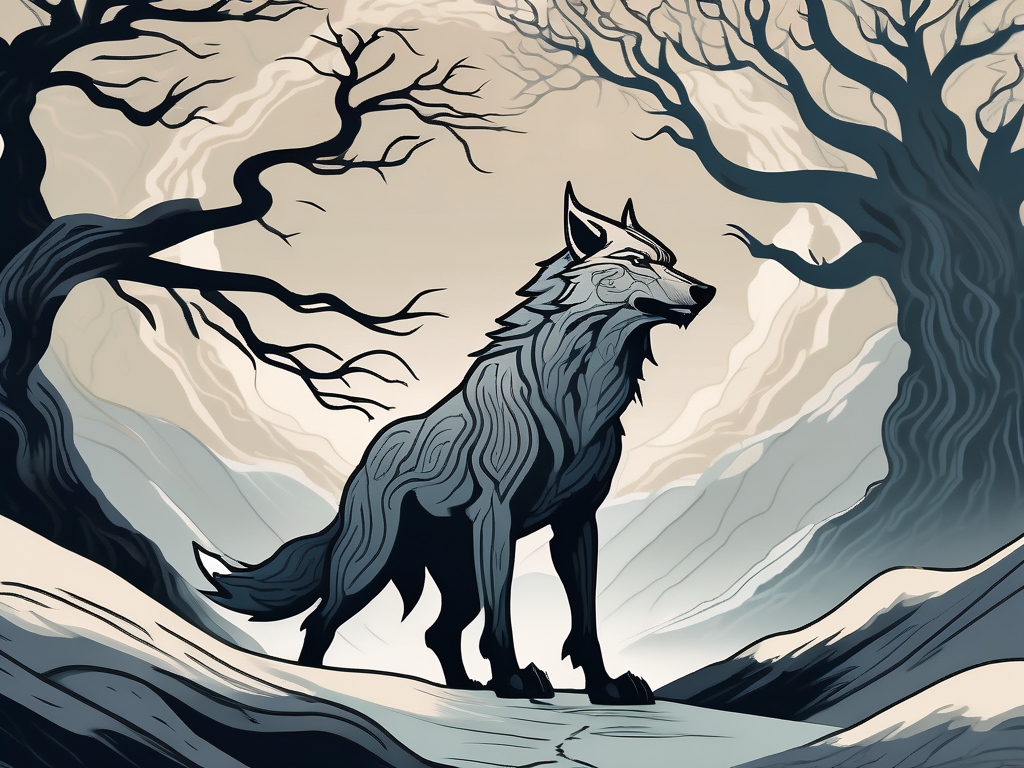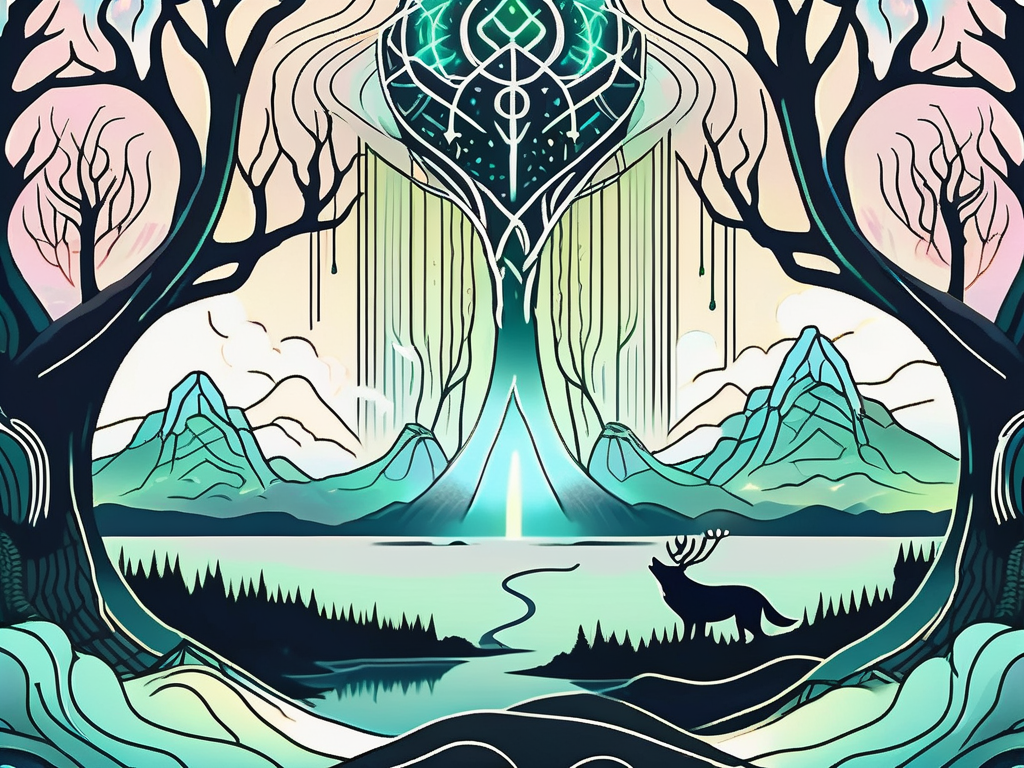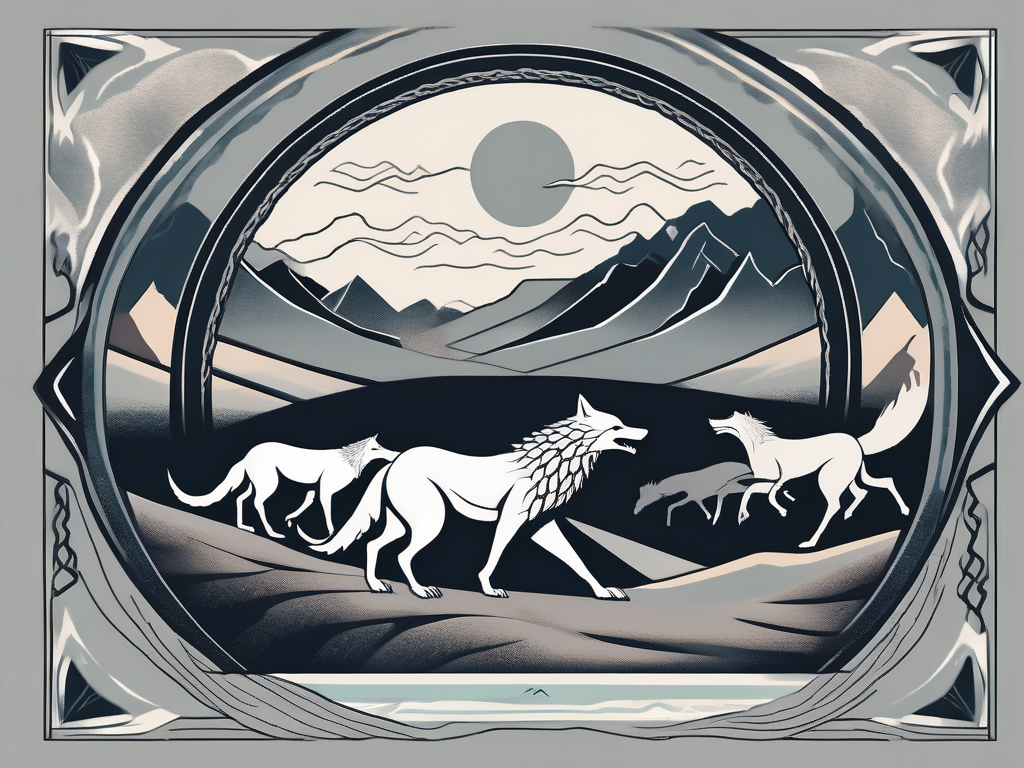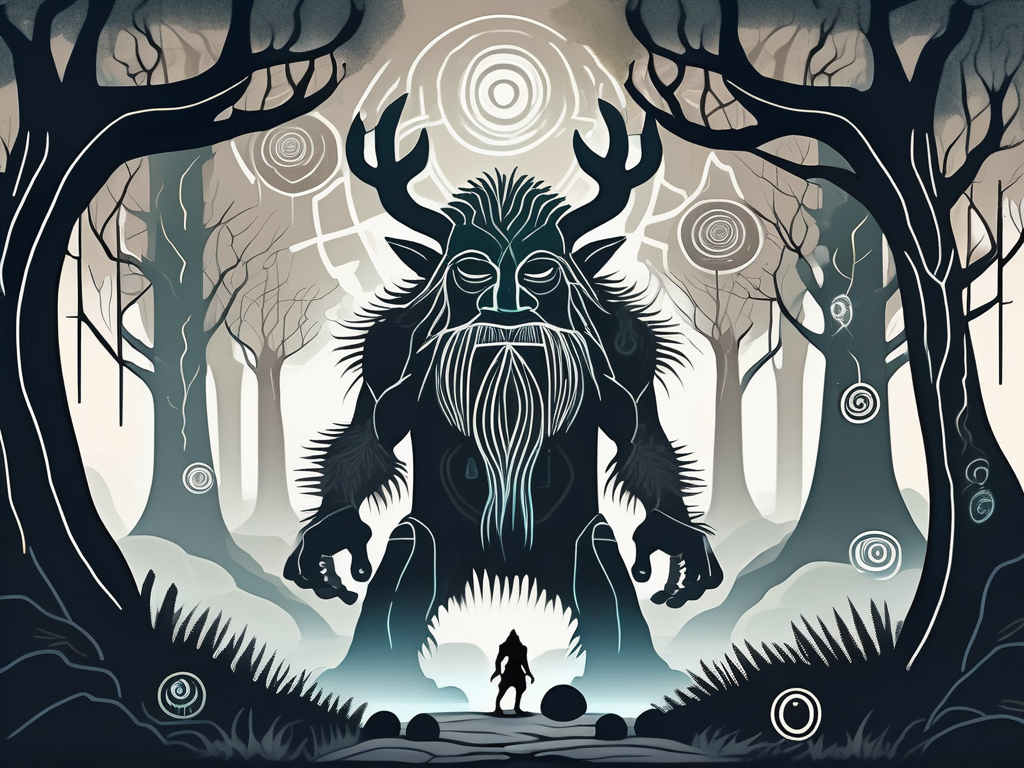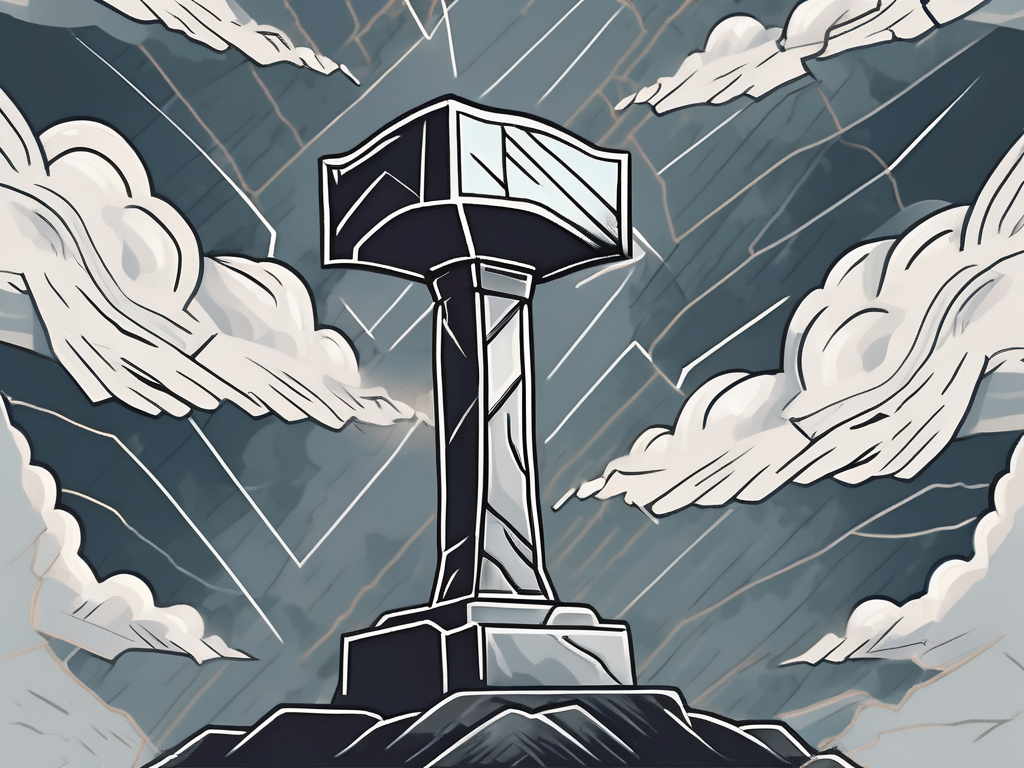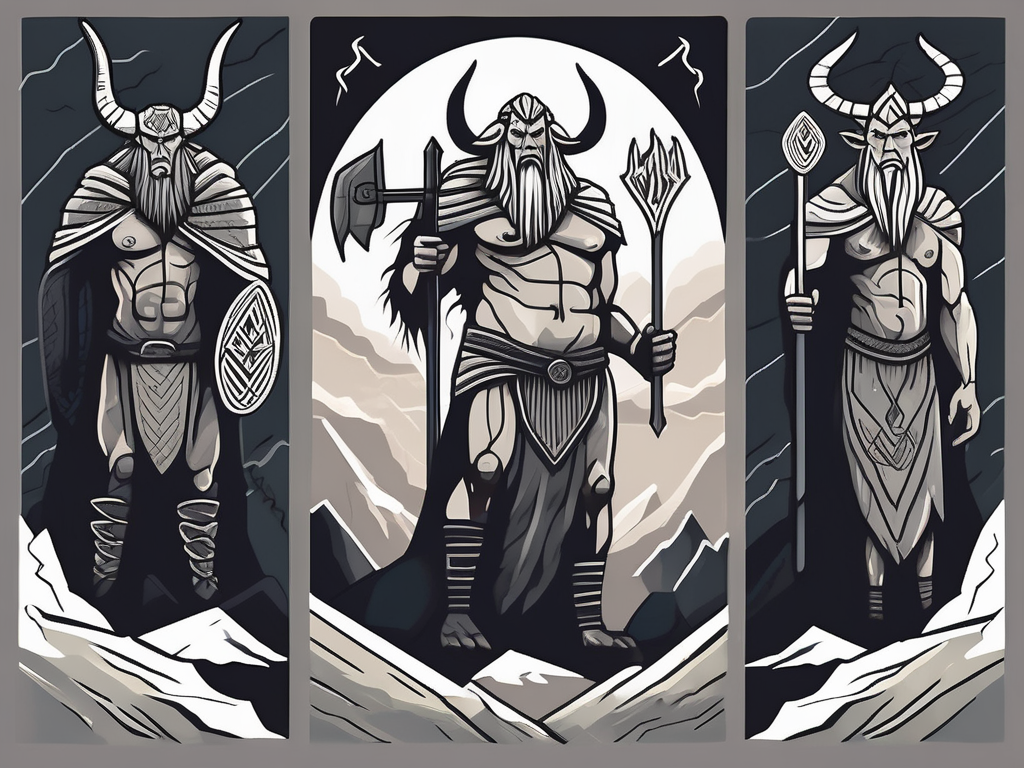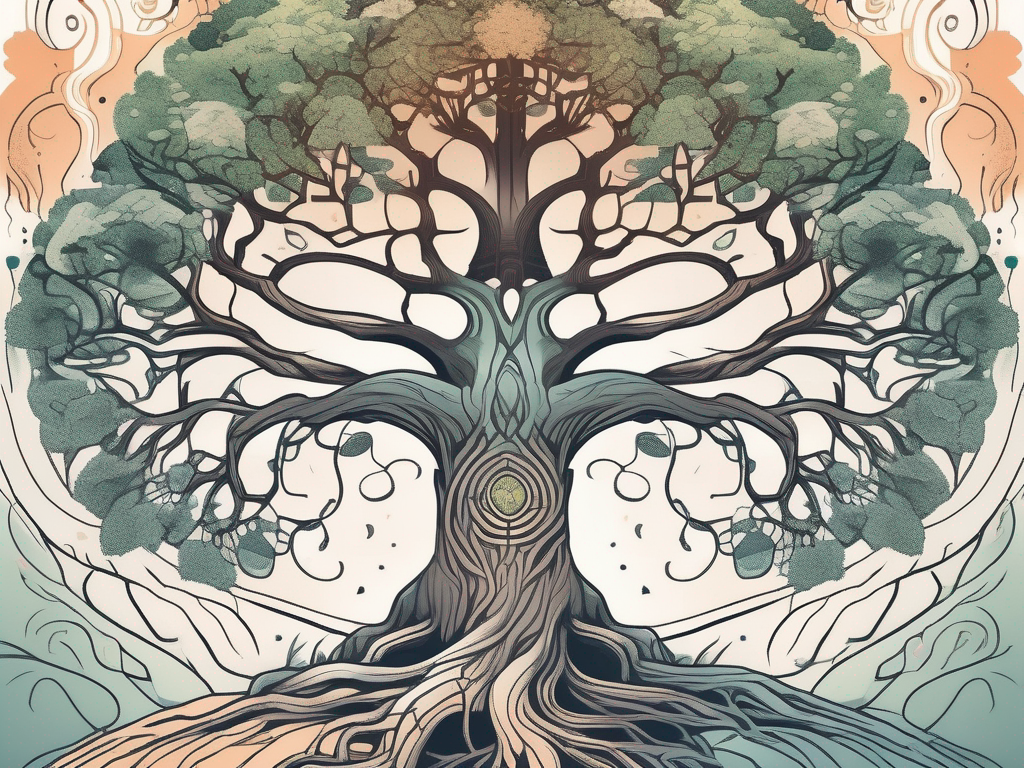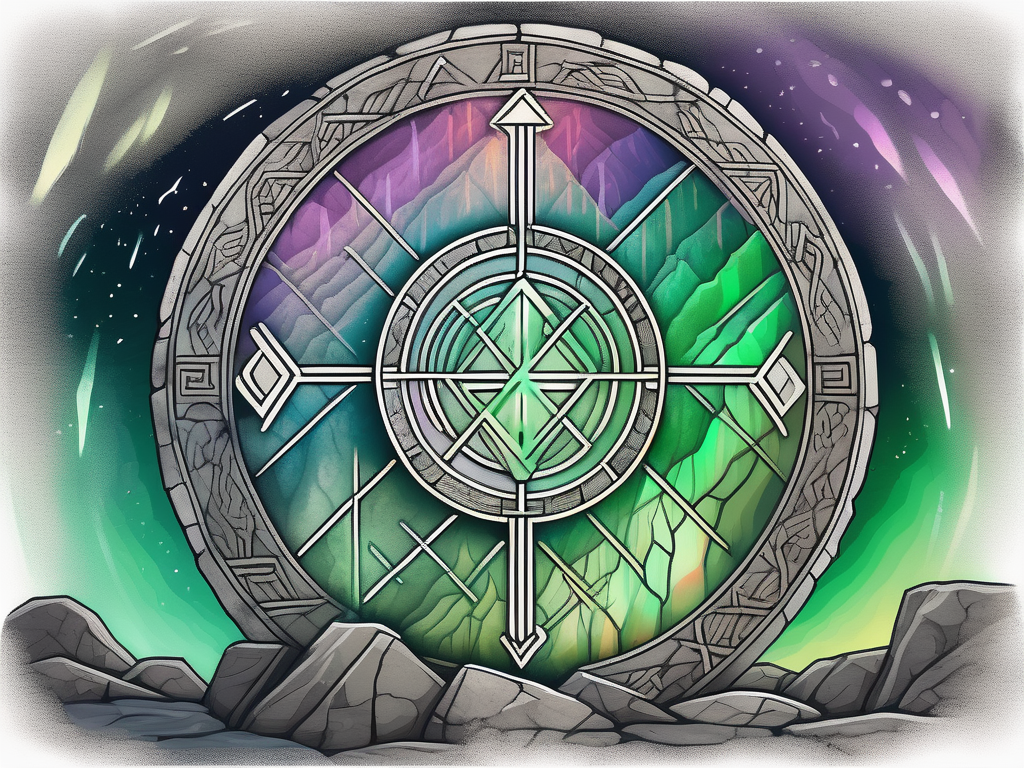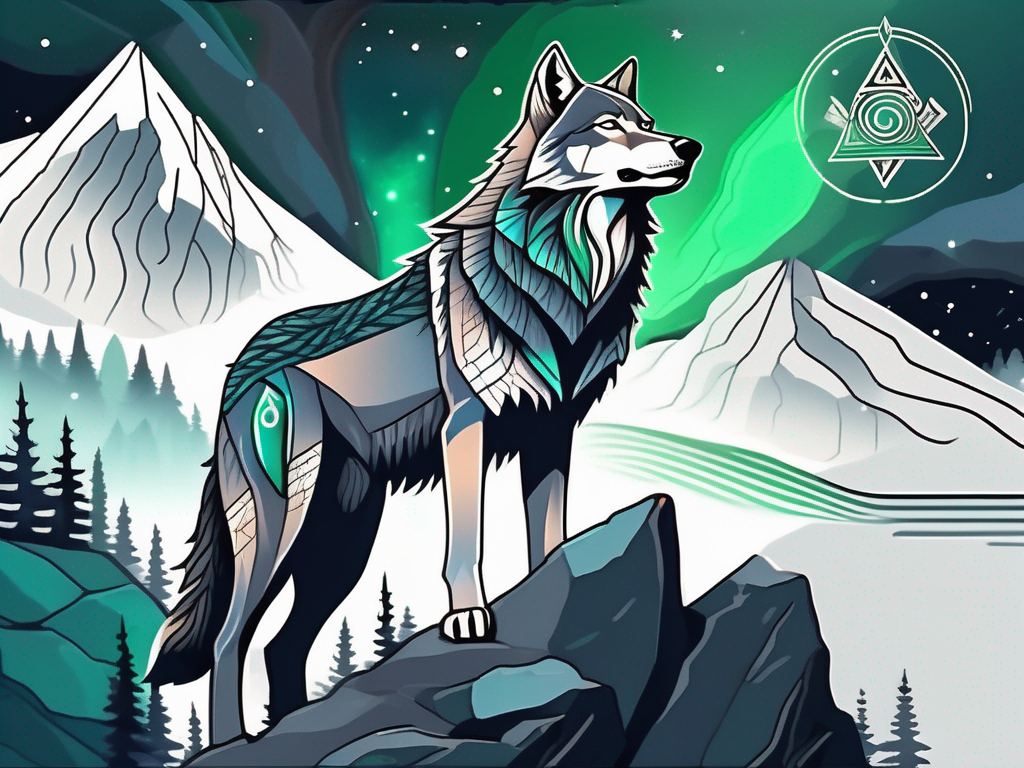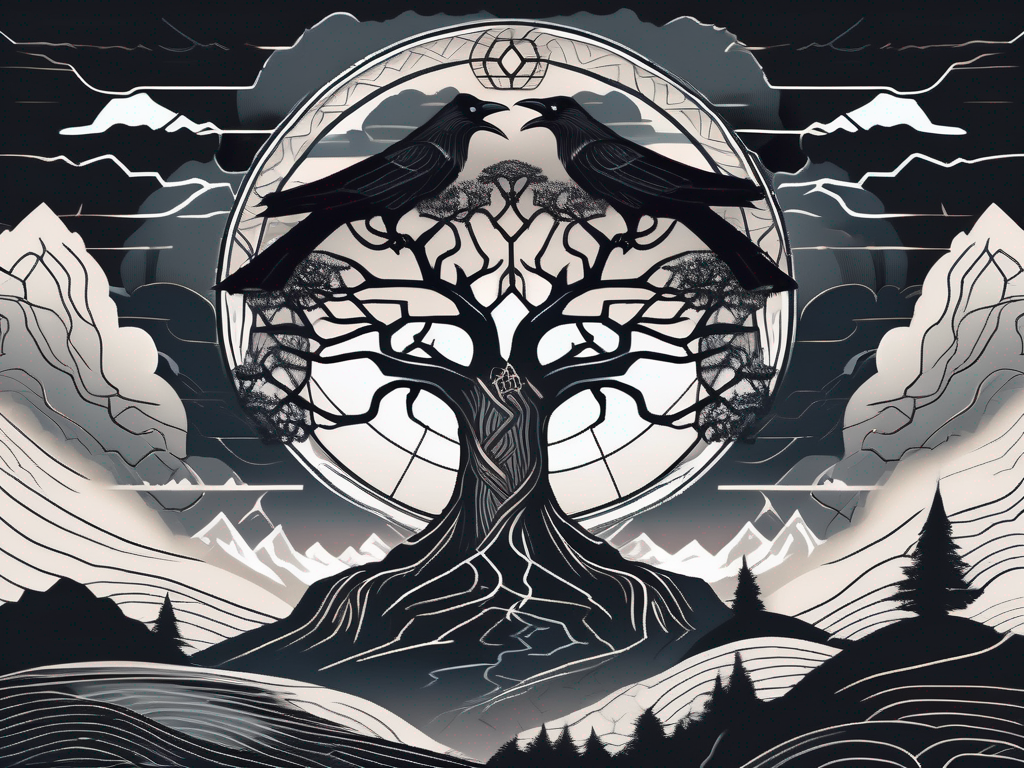Norse mythology has captured the imaginations of people around the world for centuries. Its tales of gods, heroes, and monsters have become an integral part of popular culture. In this article, we will delve into the fascinating world of Norse monsters, exploring their origins, role in Norse sagas, and their enduring presence in modern culture.
Understanding Norse Mythology
Before we dive into the monstrous beings of Norse mythology, let’s first understand the overall framework of this ancient belief system. Norse mythology originated in Scandinavia, consisting of a collection of myths and legends passed down through generations.
The Norse people, who inhabited the regions we now know as Norway, Sweden, and Denmark, had a deep connection with the natural world. Their mythology was intricately woven into their daily lives, providing explanations for the mysteries of the universe and offering guidance on how to navigate the challenges of existence.
The Origins of Norse Mythology
The roots of Norse mythology can be traced back to the prehistoric period, with influences from various ancient cultures. As the Norse people interacted with neighboring societies, such as the Celts and the Germanic tribes, they absorbed and adapted elements of their mythologies into their own.
These myths were initially communicated through oral tradition, with skalds (poets) and storytellers passing down the tales from one generation to the next. It was not until the 13th century that these stories were recorded in written form, primarily in the Poetic Edda and the Prose Edda.
The Importance of Monsters in Norse Tales
Monsters play a crucial role in Norse mythology, representing the chaotic and unpredictable forces of nature. These monstrous beings serve as foils for the gods and heroes, testing their strength, cunning, and bravery.
One such fearsome creature is Jormungandr, the Midgard Serpent. This massive serpent, who encircles the world, symbolizes the ever-present threat of chaos and destruction. Its venomous breath and immense size make it a formidable adversary for the gods, who must constantly be on guard against its malevolent presence.
Another notable monster is Fenrir, a monstrous wolf of immense strength and cunning. Bound by the gods due to the prophecy of his role in Ragnarok, the apocalyptic battle that will bring about the end of the world, Fenrir represents the inevitability of fate and the struggle against one’s own destiny.
Moreover, these creatures embody the fears and anxieties of the Norse people, reflecting the harsh realities of their environment and the constant struggle for survival. The freezing winters, treacherous seas, and barren landscapes of Scandinavia were not for the faint of heart, and the presence of monstrous beings in their mythology served as a reminder of the dangers that lurked in the world.
By facing and overcoming these monstrous challenges, the gods and heroes of Norse mythology demonstrated the virtues and qualities that the Norse people held in high regard. Bravery, cunning, and loyalty were traits that were celebrated and revered, and the tales of these mythological beings served as moral lessons for the community.
The Pantheon of Norse Monsters
Now that we have a basic understanding of Norse mythology, let’s venture into the captivating realm of Norse monsters. These creatures range from giants to ferocious animals, each with its own unique attributes and symbolism.
As we delve deeper into the rich tapestry of Norse mythology, we encounter a pantheon of fearsome and awe-inspiring creatures. These monsters, with their mythical origins and symbolic significance, add another layer of intrigue to the already captivating Norse cosmology.
The Jötnar: Giants of the Norse World
Among the most prominent of Norse monsters are the Jötnar, formidable giants with incredible strength and shape-shifting abilities. These giants represent chaotic primal forces, often serving as adversaries to the gods.
Standing tall and mighty, the Jötnar embody the untamed power of nature itself. With their colossal frames and awe-inspiring presence, they remind us of the raw, untamed forces that lie beyond the realm of mortal comprehension.
While some Jötnar are portrayed as malevolent beings seeking to disrupt the order of the cosmos, others exhibit more complex and nuanced personalities, blurring the line between good and evil. These giants challenge our understanding of morality and remind us that even in the realm of monsters, there is a spectrum of intentions and motivations.
The Draugar: Undead Creatures of Norse Lore
The Norse sagas are replete with tales of the Draugar, undead creatures who rise from their graves to haunt the living. These malevolent spirits are often depicted as fierce warriors, guarding their treasure or seeking revenge against those who wronged them in life.
The Draugar, with their decaying flesh and hollow eyes, embody the fear of death and the restless souls of the departed. Their presence serves as a chilling reminder of the inevitable fate that awaits us all. They caution the living to honor their ancestors and the natural cycle of life and death, for to disturb this delicate balance is to invite the wrath of these vengeful spirits.
The Fenrir: The Monstrous Wolf
One cannot explore Norse monsters without mentioning Fenrir, the monstrous wolf foretold to bring about Ragnarök, the ultimate destruction of the gods and the world. Fenrir is depicted as a massive, fearsome beast, harboring a deep resentment towards the gods and locked in an eternal struggle against them.
With his razor-sharp fangs and fiery eyes, Fenrir embodies the primordial chaos that lurks at the fringes of existence. He serves as a constant reminder to the gods of their vulnerability and mortality, challenging their authority and power. Fenrir symbolizes the unstoppable forces of chaos, forever threatening to disrupt the delicate balance of the cosmos.
As we explore the realm of Norse monsters, we are confronted with a diverse array of beings that embody the fears, hopes, and struggles of humanity. These creatures, with their rich symbolism and mythical origins, add depth and complexity to the already captivating tapestry of Norse mythology. They remind us that even in the realm of monsters, there is much to be learned and understood.
The Role of Monsters in Norse Sagas
Norse sagas, epic narratives that recount heroic deeds and battles, often feature monsters as formidable adversaries for the protagonists. These creatures serve not only as physical challenges but also as metaphors for the trials and tribulations faced by the heroes.
Monsters in Norse sagas personify the external threats that heroes must overcome, showcasing their valor and cunning. The heroic figures, such as Odin, Thor, and Sigurd, face off against these monstrous beings to prove their worth and protect their kin.
The triumph over these formidable foes symbolizes the triumph of order and civilization over chaos and barbarism.
One such example is the legendary battle between Thor, the god of thunder, and the monstrous serpent Jormungandr. This epic clash represents the eternal struggle between the forces of good and evil. As the embodiment of chaos and destruction, Jormungandr seeks to bring about the end of the world, known as Ragnarok. Thor, on the other hand, represents order and protection, defending the realm of the gods and humanity from the serpent’s malevolent intentions.
Furthermore, Norse monsters are rich in symbolic and metaphorical meanings. The battles between gods and giants, heroes and trolls, embody the perpetual struggle between good and evil, light and darkness, and order and chaos.
These mythical creatures represent the eternal cycles of creation and destruction, reminding the Norse people of the transient and cyclical nature of existence itself.
One such creature that encapsulates this concept is the fearsome Fenrir, a monstrous wolf destined to bring about the end of the world. Fenrir’s insatiable hunger and uncontrollable strength symbolize the destructive forces that can threaten the stability of the cosmos. The gods, aware of the impending doom, attempt to bind Fenrir, but their efforts prove futile. This tale serves as a reminder of the inevitability of chaos and the need for constant vigilance in maintaining order.
In addition to their symbolic significance, Norse monsters also provide a sense of adventure and excitement to the sagas. The epic battles between heroes and monsters captivate the imagination, transporting the audience to a world of danger and heroism.
One such thrilling encounter is the legendary fight between the hero Sigurd and the dragon Fafnir. Fafnir, once a powerful dwarf, transformed into a fearsome dragon after succumbing to greed and the curse of a cursed ring. Sigurd, armed with a magical sword, engages in a battle of wits and strength with the monstrous creature. This confrontation showcases Sigurd’s bravery and cunning, as he outwits the dragon and claims victory.
Overall, monsters in Norse sagas play a multifaceted role. They serve as physical challenges, metaphors for the struggles faced by the heroes, and symbols of the eternal struggle between order and chaos. These mythical creatures add depth and excitement to the sagas, captivating audiences with tales of heroism and the constant battle against the forces of darkness.
Norse Monsters in Modern Culture
The enduring fascination with Norse mythology and its enchanting monsters can be seen in various forms of modern culture. From literature to film, these mythical beings continue to captivate audiences around the world.
Norse Mythology in Literature and Film
Countless books and movies draw inspiration from Norse mythology, incorporating its gods, heroes, and monsters into their narratives. From Neil Gaiman’s “American Gods” to Marvel’s Thor comic books and movies, these adaptations highlight the enduring popularity of Norse mythology.
The Influence of Norse Monsters on Fantasy Genres
Norse monsters have had a profound impact on fantasy genres, inspiring the creation of new mythical creatures and worlds. Authors and game designers often draw from Norse mythology to craft their own monsters, imbuing their stories with a sense of awe and wonder.
Furthermore, the symbolism and themes associated with these monsters continue to resound with modern audiences, offering insights into the human condition and the eternal struggle between order and chaos.
Norse monsters have left an indelible mark on our collective psyche, as their tales continue to be told and retold through the ages. Whether through ancient sagas or modern adaptations, these monstrous beings serve as a reminder of our primal fears, desires, and the enduring power of myth and storytelling.
